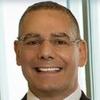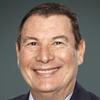Drafting and Defending Software Patents: Meeting Sections 102, 103, and 112 Requirements
Recording of a 90-minute premium CLE video webinar with Q&A
This CLE course will guide patent practitioners on drafting their software patent applications to comply with Section 102, 103, and 112 requirements and defending software patents from attacks under those statutory sections. The panel will discuss federal court guidance, prosecution guidelines, and offer litigation and prosecution strategies.
Outline
- Challenges in drafting software patent specifications
- Best practices for drafting software patent claims
- Guidance from Federal Circuit and PTAB decisions for meeting requirements
- Novelty
- Non-obviousness
- Written description
- Enablement
- Claim definiteness
- Defending Section 102, 103, and 112 challenges at the district court and PTAB
Benefits
The panel will review these and other high priority issues:
- What are the hurdles for patent counsel to demonstrate a software-related claim is novel and non-obvious during prosecution?
- What is the best way to defend against Section 102, 103, or 112 attacks at the district court and the PTAB?
Faculty

Michael L. Kiklis
Member
Bass Berry & Sims
Mr. Kiklis focuses on PTAB litigation as well as district court patent litigation. He also handles Federal Circuit... | Read More
Mr. Kiklis focuses on PTAB litigation as well as district court patent litigation. He also handles Federal Circuit appeals from his cases. With an extensive background in computer science, his technological focus is on software patent matters. He frequently handles high stakes matters, having been involved in several cases in which over $1 billion was at stake.
Close
Stephen G. Kunin
Partner
Maier & Maier
Mr. Kunin represents clients in post-grant patent proceedings at the U.S. Patent and Trademark Office. He also... | Read More
Mr. Kunin represents clients in post-grant patent proceedings at the U.S. Patent and Trademark Office. He also serves as an expert witness and consultant on patent policy, practice and procedure. During his tenure at the USPTO, he served in many executive positions, including as Deputy Commissioner for Patent Examination Policy.
Close